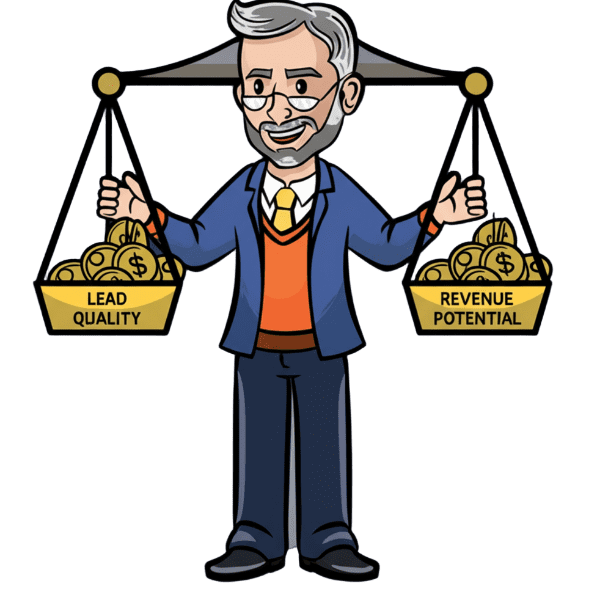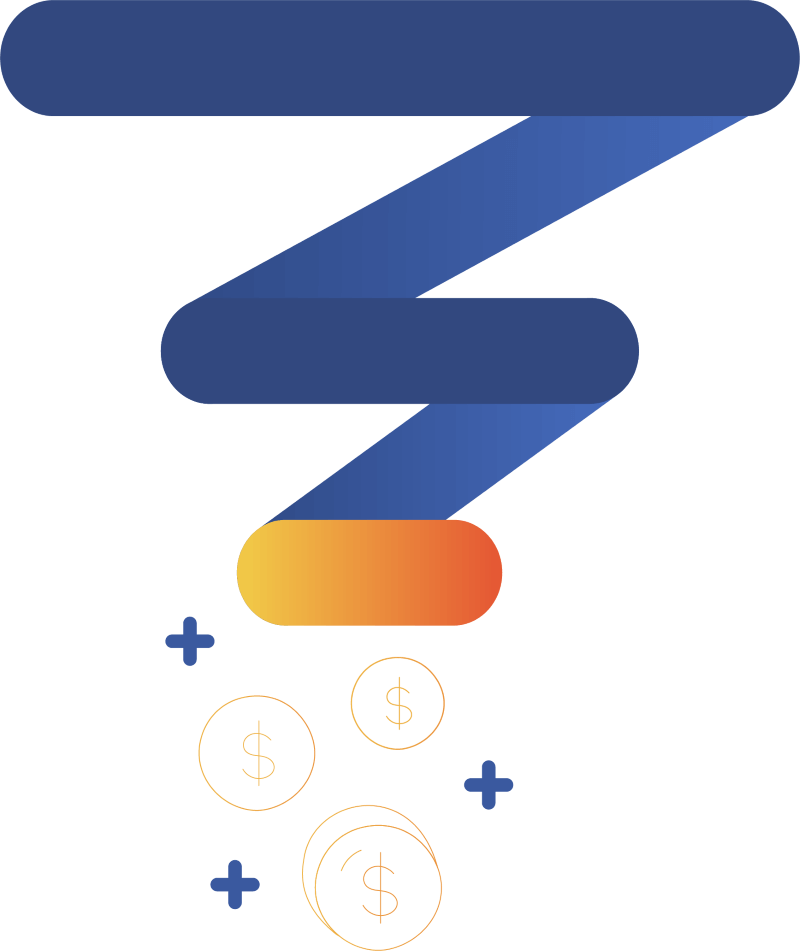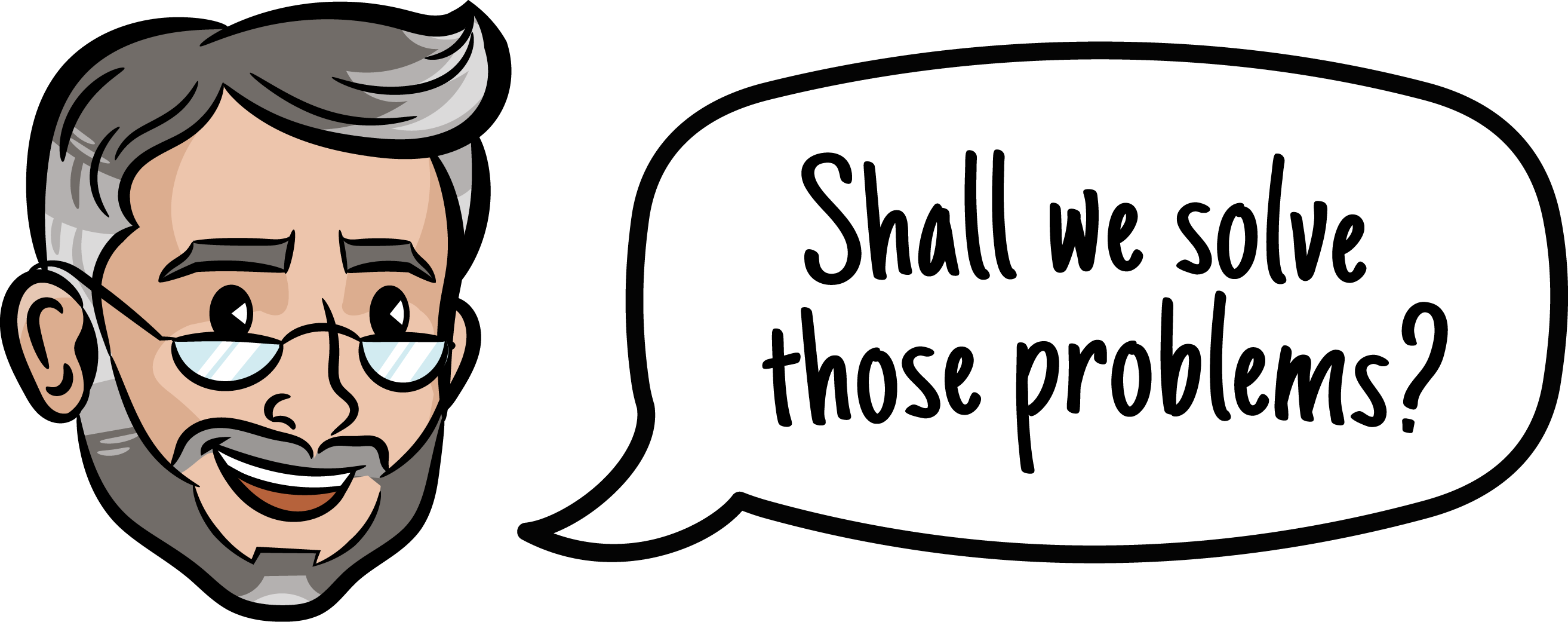In the ever-evolving world of business, sales and marketing funnels play a crucial role in driving growth and success. But have you ever wondered if there’s a way to take your funnel game to the next level?
Well, buckle up, because we’re about to dive into the exciting world of weighted funnels! In this article, we’ll explore how weighted funnels can supercharge your sales and marketing efforts, helping you optimize performance and achieve outstanding results.
So, let’s get started!
Understanding Sales and Marketing Funnels
Before we delve into the wonders of weighted funnels, let’s quickly recap the basics. Marketing and sales funnels are the structured pathways that guide potential customers from the total-stranger stage to taking an action, usually a purchase. If you need help explaining sales funnels to your students or staff trying using some of our free sales funnel illustrations.

You’re leading potential customers (known as prospects) through a captivating journey, capturing their attention, nurturing their interest, and guiding them towards making a purchase or taking the desired action. Closed-Won in sales and marketing refers to a stage in the sales process where a sales opportunity has been successfully converted into a customer sale.
However, measuring and optimizing funnel performance can be quite challenging. How do you know which stage needs more attention? Which leads have the highest expected value, shortest & simplest sales cycle, and thus highest ROI on sales and marketing labor and spend?
That’s where weighted funnels come into play!
What are Weighted Funnels?
Weighted funnels are like the secret sauce that adds an extra kick to your funnel game. If you want to go deeper into the math behind funnel weighting and attribution, check out our course Sales Funnel Theory: Attribution & Funnel Math. Instead of treating each prospect in the funnel as equal, weighted funnels assign different weights to reflect the value and quality of leads at each stage. Each lead may ultimately be buying the same thing, but with time, you’ll observe that some prospects will move faster and purchase more, and those are the folks that deserve the most attention.
It’s like giving those high-quality leads a well-deserved VIP treatment! By incorporating lead quality and value into the equation, you can gain deeper insights and make more informed decisions. Weighting your funnels is a way to prioritize your efforts and resources based on the potential impact.
Implementing Weighted Funnels
Now, let’s talk implementation. Creating a weighted funnel involves identifying and assigning weights to each stage based on predefined criteria that each prospect may or may not meet. Think of it as giving a thumbs-up to the leads that show strong potential or align closely with your ideal customer profile. By doing so, you prioritize your efforts and resources where they’re most likely to yield the best results and improve your go-to-market strategy.

Professor’s Note
A common practice for optimizing sales funnels is to rely heavily on marketing automation in the top of the funnel to automate correspondence with prospects who are near the top of the funnel.
Once a prospect is considered further down the funnel by taking an action such as downloading a white paper, or visiting the website X times, a sales team member is then assigned to correspond directly. Downloads and free resources are examples of secondary calls to action that help capture and nurture prospects who aren’t ready for the primary offer.
Our Sales Funnel Audit service often helps identify that optimization has not occurred yet.
It’s all about maximizing efficiency and impact! Remember, the key is to establish clear and objective criteria to assign weights. This ensures consistency and removes any subjective biases.
If you need a deeper analysis of your own funnel performance, a Conversion Rate Optimization Audit can uncover hidden bottlenecks and provide step-by-step recommendations to improve conversions across every stage.
To strengthen how visitors move from interest to action, check out Middle of Funnel: Website & Conversion Rate Optimization.
Optimizing Weighted Funnels
Once your weighted funnel is up and running, it’s time to optimize and fine-tune your strategies. This is where the magic happens! Dive into the data and analyze it like a detective on a mission. Identify bottlenecks and areas that need improvement. Are potential customers dropping off at a specific stage? Is there a particular touchpoint that’s not resonating with them?
Tweak your approach to address their pain points and provide solutions. With weighted funnels, you have a bird’s-eye view of the entire customer journey, allowing you to optimize each stage based on the assigned weights. It’s like giving your funnel an upgrade with turbocharged precision!

Professor’s Note
The typical transformation of a company that implements weighted funnels looks like this:
The company starts off struggling to convert leads into paying customers. By implementing weighted funnels, they quickly identified that their decision stage was weak (prospects were taking too long there). It was like finding a treasure map pointing to the missing piece of the puzzle!
Armed with this insight, they reevaluate their messaging, provide more compelling offers, instruct sales to spend more time on that stage, and witness a significant increase in conversions.
Best Practices for Using Weighted Funnels
To make the most of weighted funnels, let’s cover some best practices.
Firstly, clearly define your lead qualification criteria to ensure consistency. You want to be crystal clear about what makes a lead valuable at each stage.
Secondly, regularly review and update the weights based on real-time data. Keep your finger on the pulse of your audience’s preferences and behaviors, and adjust your weights accordingly. We perform a Hubspot audit (CRM tool), we’re looking for evidence that leads are being weighted within the funnel.
Lastly, foster collaboration between your sales and marketing teams so you can execute a complex go-to-market strategy. Break down those silos and encourage open communication. When everyone’s on the same page, magic happens! A sales funnels agency can support this process by bringing in the expertise needed to optimize lead flow and alignment across teams.

Professor’s Note
Sales teams love weighted funnels. Individual sales executives constantly have to decide who “in their pipe” deserves the most attention each day. Sales training can help if that isn’t already happening.
With weighted funnels, lead-scoring is possible.
Lead-Scoring = Assigning a numerical score to each prospect that indicates likelihood to close.
When provide Hubspot configuration, a sales person can view all of their prospects sorted by lead score.
Challenges and Limitations of Weighted Funnels
Weighted funnels, like any other approach, aren’t without their challenges. One challenge is the potential introduction of biases and subjectivity when assigning weights.
It’s essential to strive for objectivity and transparency. Make sure the criteria and process for assigning weights are well-defined and understood by all stakeholders. Additionally, be mindful not to overemphasize certain stages while neglecting others.
Maintain a holistic view of the buyer’s journey and allocate resources accordingly. To overcome these challenges, leverage data-driven insights, employ a diverse team for weighing decisions, and regularly reassess and recalibrate your weights. It’s an ongoing process of refinement and improvement.
Conclusion
Congratulations, dear reader! You’ve embarked on a thrilling journey into the world of weighted funnels.
By implementing these powerful tools, you can optimize your sales and marketing performance like never before.
Embrace the possibilities, experiment, and keep refining your approach.
With weighted funnels, you’ll be on your way to skyrocketing success and reaching new heights.
So, go forth, conquer those funnels, and watch your business thrive! Happy funneling!
If you want to strengthen the very top of your funnel with high-intent search traffic, explore Top of Funnel: Paid Search (PPC/SEM) Marketing.
For Further Reading: What Is the Touch-1 Test in Conversion Rate Optimization? What does a CRO expert do? Building a B2B Sales Funnel: The Step-by-Step Guide



